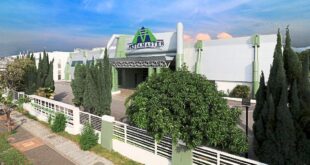KUCHING: Sarawak will produce green hydrogen on a large scale mainly for the Japanese market under a tripartite agreement inked between Sarawak Economic Development Corp (SEDC) and two Japanese firms.
The tripartite agreement, which involved SEDC’s wholly-owned subsidiary, SEDC Energy Sdn Bhd, Japan’s oil firm Eneos and trading house Sumitomo Corp, signifies a strategic alliance for the H2ornbill project within the Sarawak H2 Hub framework in Bintulu.
This SEDC-led initiative aims to establish a robust and environmentally sustainable clean hydrogen supply chain, according to the state-owned agency.
The agreement outlines a comprehensive strategy to generate approximately 90,000 tonnes per annum of clean hydrogen, with 2,000 tonnes allocated for local consumption in Sarawak and the remainder for the export market.
SEDC Energy will take a key role in overseeing the technical aspect of hydrogen production, with a focus on integrating and optimising the energy procurement process to ensure efficient project execution.
Eneos will provide technical support for the production, and also contribute proprietary technology to transport the hydrogen by sea at room temperature. Sumitomo, on other hand, will evaluate project feasibility and financing.
Eneos and Sumitomo will consider establishing a special-purpose company with SEDC Energy to undertake the mega-project, one of the two hydrogen projects planned for Sarawak H2 Hub.
“The goal is to commence clean hydrogen production by 2030, and all the involved parties will enter the front-end engineering design (Feed) phase.
“Bintulu was chosen as the hub’s location due to the existing petrochemical industrial complex, which offers the advantage of utilising current facilities for methylcyclohexane production, a means of transporting hydrogen to Japan,” said SEDC.
According to SEDC, the availability of hydroelectric power is the driving force behind the participation of Eneos and Sumitomo in the Sarawak H2 Hub project as the state’s hydro-powered grid system will ultimately produce cleaner hydrogen, making it an attractive prospect for the investors.
The hydropower will be used to electrolyse water to produce green hydrogen without emitting carbon dioxide.
SEDC said the H2ornbill project aligns with Malaysia’s New Energy Transition Roadmap and Sarawak’s Hydrogen Economy Roadmap, which is aimed at propelling Sarawak to become a developed state by 2030.
This collaborative effort, said SEDC, will bolster Malaysia’s clean energy aspirations as acknowledged within the national policy framework.
On the sidelines of the recent Asia Zero Emission Community or Azec in Tokyo, Sarawak Deputy Minister for Energy and Environmental Sustainability Datuk Dr Hazland Abang Hipni highlighted the significance of the SEDC Energy-Eneos-Sumitomo partnership to Japan Economy, Trade and Industry Minister Ken Saito during a courtesy call on the latter. Officals from Eneos, Sumitomo and SEDC Energy also presented updates on the H2ornbill project to Saito.
Besides H2ornbill, Sarawak Energy is also in collaboration with three South Korean multinationals, namely, Samsung Engineering, Posco and Lotte Chemical to develop a green hydrogen derivative facility known as H2biscus project.
The project has also earlier this year completed its feasibility studies and progressed to the Feed phase.
According to Sarawak Premier Tan Sri Abang Johari Tun Openg, the final investment decision on the H2biscus project and H2ornbill project is expected to be made in first-quarter 2024 (1Q24) and 2Q25, respectively.
He said the two projects, which would be the cornerstone of Sarawak’s green hydrogen economy and a benchmark world-scale project, have the potential to produce up to 238,000 tonnes of green hydrogen per annum.
Other than producing hydrogen, he said H2ornbill and H2biscus plants will also create new hydrogen-based industries, such as the manufacturing of electrolysers, fuel cells and the green chemical indutry.
Last month, Abang Johari said the H2ornbill and H2biscus projects are expected to generate an additional RM2.4bil to Sarawak’s gross domestic product by 2030.
SEDC Energy is also developing a hydrogen production plant and refuelling station to support the Kuching Urban Transportation System (Kuts) in Rembus, Samarahan Division. The plant project is expected to be completed in 2025.
The Kuts, comprising three lines, is estimated to cost RM6bil and will utilise a hydrogen-power autonomus rapid transit (Art) system (a hybrid of train, bus and tram). The Art is expected to be introduced in stages from 4Q25, starting with the Samarahan and Serian lines, covering a total of 53 kms.
 BeritaKini.biz Berita Viral Terkini di Malaysia
BeritaKini.biz Berita Viral Terkini di Malaysia





